From Messina, Sicily, here are your stories for today...
Be safe out there!
Tom
-
Woman hit by small plane that crash-lands at busy Long Beach park
by Jacob Sisneros
Authorities say two people were taken to a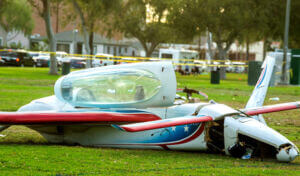 hospital with moderate injuries after a small plane crashed into a person as it made an emergency landing at Heartwell Park, northeast of Long Beach Airport.
hospital with moderate injuries after a small plane crashed into a person as it made an emergency landing at Heartwell Park, northeast of Long Beach Airport.
Firefighters responded to a soccer field at the park at about 4 p.m. after they were notified of the crash near Carson Street just east of Woodruff Avenue, said Long Beach Fire Department Capt. Jack Crabtree.
When firefighters arrived, they found a small aircraft on its belly with broken landing gear, Crabtree said.
Firefighters pulled the pilot, an elderly man, out of the plane’s cockpit and took him to a hospital, Crabtree said. Paramedics also took a woman in her 40s to a hospital for treatment after she was struck by the plane when it attempted to land in the park.
Heartwell Park is a hub for youth sports most weeknights, with hundreds of people enjoying the park’s 122.5 acres.
The plane crash-landed on a soccer field adjacent to two softball fields.
“The good news is it could have been a whole lot worse,” Mayor Rex Richardson said at the start of Tuesday’s City Council meeting. “And we are fortunate in that there have been no fatalities, no serious injuries. It was a glider [that] did an emergency landing, pretty rough landing on the field at Heartwell Park.”
Aerial footage of the scene showed an aircraft with a cockpit made for two people. Debris was scattered near the left wing of the aircraft, which appeared to be cracked and nearly falling off.
The plane appeared to have a propeller on the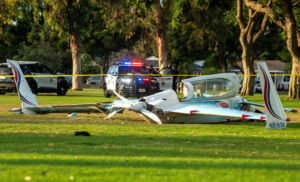 back with two smaller wings near the nose and two larger wings at the rear.
back with two smaller wings near the nose and two larger wings at the rear.
Federal Aviation Administration records show the plane was a Long-EZ model aircraft first built in 1986. It was registered to a pilot living in Rancho Palos Verdes.
Jerry Taylor, a retired general aviation pilot who flew for 40 years, said he recognized it as a model designed by Burt Rutan, who created the first aircraft to fly around the world without stopping or refueling.
John Denver died in a plane crash involving the same model of aircraft in 1997, Taylor said.
Flight records show the plane took off from Compton/Woodley Airport shortly after 9:15 a.m. Tuesday and landed at French Valley Airport in Murrieta a half hour later.
The plane took off from the same Murreita airport shortly before 3:40 p.m. and was headed toward Long Beach Airport when it crashed around 4 p.m. The pilot told first responders he was on his way back to the Compton/Woodley Airport, a city spokesperson said.
Investigators were working to determine the cause of the crash.
https://lbpost.com/news/small-plane-crashes-at-heartwell-park-in-long-beach/
Identities released of three people killed in Lafayette Parish plane crash, officials confirm
Scott Yoshonis
UPDATE, 10/21/25, 5 p.m.: The identities of the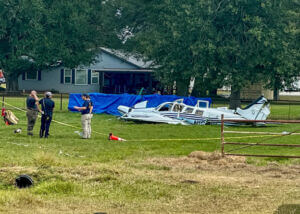 three people who had died in a plane crash in Lafayette Parish earlier this morning have been released, officials have confirmed.
three people who had died in a plane crash in Lafayette Parish earlier this morning have been released, officials have confirmed.
Upon arrival, deputies confirmed that the aircraft, a Beechcraft Baron a twin-engine airplane had crashed and the victims were pronounced dead at the scene.
Following notification of the family, the deceased have been identified as:
- Bruce Verduyn, 58, of The Woodlands, Texas
- Lydia Laws, 46, of Spring, Texas
- Justin Ramsey, 42, of The Woodlands, Texas
Deputies are currently securing the crash site and assisting the Federal Aviation Administration (FAA) investigators, who will lead the investigation.
This remains an active investigation. No additional information has been provided.
ORGINAL STORY: VATICAN, La. (KLFY) — Three people have died in a plane crash in Lafayette Parish, officials have confirmed.
The crash occurred in a field at the corner of Gloria Switch Road and La. 93 near the community of Vatican.
The Lafayette Parish Sheriff’s Office has confirmed there are three fatalities.
Officials said the aircraft was a Beechcraft Baron twin-prop plane. According to online records, the plane was owned by Align Aviation in Woodland, Texas.
The flight took off from Hooks Memorial Airport in Houston at 9:53 a.m. Its intended destination was a private airport 8 miles south of Cankton.
https://www.yahoo.com/news/articles/plane-crashes-lafayette-parish-officials-164603873.html
Landing gear failure causes small plane to skid during landing at Rick Husband
by Matthew Watkins
AMARILLO, Texas (KVII) — A small plane skidded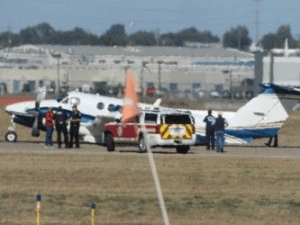 on the runway while landing at Rick Husband Amarillo International Airport due to landing gear failure.
on the runway while landing at Rick Husband Amarillo International Airport due to landing gear failure.
The incident occurred at 11 a.m. after the landing gear of a 1981 Beech B200 plane failed, leading to it having to come in for a landing.
Due to the failure of the rear landing gear, the plane skidded on the runway.
When the plane flew by the tower, the landing gear was down but collapsed before landing.
Two people were on board the plane; fortunately, no one was hurt.
Update: Two people injured in helicopter crash near Springfield Downtown Airport
by: Tony Nguyen, Carissa Codel
SPRINGFIELD, Mo. — A helicopter has crashed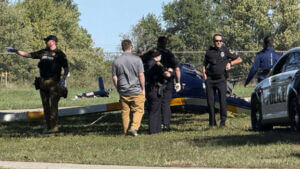 south of the Springfield Downtown Airport.
south of the Springfield Downtown Airport.
According to Springfield Police, at 11:25 a.m. Tuesday morning, a report of a crash occurred on the north side of the Cooper Sports Complex.
Two people were transported to the hospital with serious, but stable injuries.
SGF Flying Service says the chopper was from So Fly—they are not affiliated with the Downtown Airport, they just used their field to take off.
So Fly is a Springfield helicopter flight training school.
Police say debris from the crash was collected, but there are still pieces missing. If you discover any debris, call SPD, and they will come collect it.
https://www.ozarksfirst.com/news/helicopter-crash-springfield-airport/
Small plane makes emergency landing on interstate northeast of Las Vegas
by Matthew Seeman
LAS VEGAS (KSNV) — A small plane made an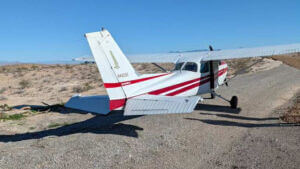 emergency landing on Interstate 15 between Las Vegas and Mesquite Tuesday morning, according to police.
emergency landing on Interstate 15 between Las Vegas and Mesquite Tuesday morning, according to police.
The single-engine Cessna 172 touched down around 9 a.m. on southbound I-15 at mile marker 82 in Moapa Valley, about 28 miles north of the Speedway Boulevard exit, Las Vegas Metropolitan Police said.
The pilot reported having engine issues and a landing gear out, Trooper Shawn Haggstrom with Nevada State Police, Highway Patrol told News 3. The plane landed safely without any further issues or injuries.
Police officers and highway patrol troopers are conducting traffic control as crews assess the plane on the shoulder.
News 3 has reached out to the Federal Aviation Administration for further information, though it's unclear if the agency will provide comment amid the ongoing government shutdown.
FAA records show the plane is registered to an LLC based in Las Vegas called Ace of Spades Aviation.
No one hurt when small plane makes emergency landing on Mission Beach
Single-engine Cessna landed roughly a quarter-mile north of Belmont Park just before 11:45 a.m. Tuesday
By Karen Kucher | karen.kucher@sduniontribune.com | The San Diego Union-Tribune, K.C. Alfred | kc.alfred@sduniontribune.com | The San Diego Union-Tribune and Caleb Lunetta | caleb.lunetta@sduniontribune.com | The San Diego Union-Tribune
When the engine on his small plane suddenly quit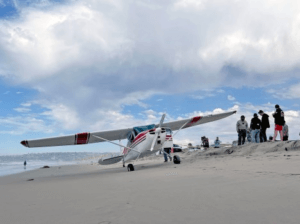 about 800 feet above the San Diego coastline, pilot Victor Schneider started looking for a safe place to land.
about 800 feet above the San Diego coastline, pilot Victor Schneider started looking for a safe place to land.
He and his daughter had taken off from the Oceanside airport about 15 minutes earlier.
Schneider, a commercial airline pilot who has owned the Cessna for more than 23 years, found a spot on the sand in Mission Beach near the waterline. Shortly before noon, he glided to a stop.
He and his daughter opened the doors and climbed out of the plane after the emergency landing. No one on the ground was injured, either.
Schneider told reporters he tried to restart the plane’s engine after it cut out, but he realized he “couldn’t get it back.”
He began looking for a stretch of sand without people on it. His timing was lucky: The weather Tuesday was cool with light sprinkles, making for an uncrowded beach.
“The thing is you want to put it down where it’s safe, and I didn’t want to hit anybody,” he said. “So fortunately there (weren’t) that many people on the beach. There was only about four people within about a quarter of a mile, so they were all widely spaced.”
He said he tried to avoid the dry sand, knowing landing there could flip the plane over. So he headed toward the edge of the waterline, “threw about 30 degrees of flaps on” which slowed the plane and touched down.
The plane came to rest in front of Manhattan Court.
Lifeguards watched the plane as it landed, then firefighters and police checked if anyone was injured. The plane was removed from the beach after the FAA gave the OK, Marine Safety Capt. Maureen Hodges said.
Etech Muñoz, a lifelong Mission Beach resident, said he saw the plane land.
“The dude came in hot, but also pretty graceful,” Muñoz said. “I thought he was going to crash, and I couldn’t believe my eyes for a second. And then he just started floating through the air and hit the sand.”
Then the pilot coolly opened the door and hopped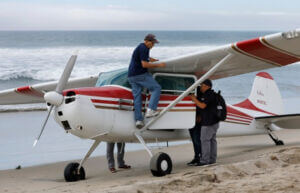 out of the plane unharmed. “He didn’t have a scratch on him!” Muñoz said. “He must’ve known what he was doing because it was one of the smoothest things I’ve seen in my whole life.”
out of the plane unharmed. “He didn’t have a scratch on him!” Muñoz said. “He must’ve known what he was doing because it was one of the smoothest things I’ve seen in my whole life.”
San Diego Fire-Rescue spokesperson Candace Hadley said no debris or fuel was scattered on the sand after the emergency landing, and the beach remained open.
“Just given the location of where he landed, I think it speaks to the experience of the pilot,” Hadley said. “It was pretty miraculous.”
The pilot’s daughter, Jennifer Schneider, who works as a flight attendant, said her father was careful to find the right spot for his emergency landing. She said he’s been flying since he was 16.
“We saw that wonderful, long runway here, and with his skill and expertise, he landed better than on pavement,” she said. “I have complete faith in his skill, his ability. He’s been trained, he’s been through countless hours of emergency drills. So he knew what he was doing… I had faith in that, and obviously, God was watching over us as well.”
No one hurt when small plane makes emergency landing on Mission Beach
NTSB Final Report: Costruzioni Aeronautiche Tecnam P2006T
During The Descent, The Pilots Noticed That The Airplane Required Additional Right Rudder To Maintain Control
Location: Larkspur, Colorado Accident Number: CEN24LA226
Date & Time: June 16, 2024, 07:41 Local Registration: N968GV
Aircraft: Costruzioni Aeronautiche Tecnam P2006T Aircraft Damage: Substantial
Defining Event: Fuel related Injuries: 2 Serious
Flight Conducted Under: Part 91: General aviation - Instructional
Analysis: The flight instructor and commercial pilot receiving multi-engine instruction intentionally shut down the left engine after they performed one-engine-inoperative (OEI) training. They restarted the left engine successfully on the second attempt and proceeded back to the departure airport. During the descent, the pilots noticed that the airplane required additional right rudder to maintain control and then noticed a decrease in left engine coolant temperature and rpm.
Carburetor heat was not used during the flight. Due to the partial loss of engine power, they diverted to the nearest airport for a precautionary landing. During the descent for landing, they secured the left engine and feathered the propeller. They were unable attain the runway and landed on a highway; when the airplane touched down, it struck a road sign with the left wing. The flight instructor then pitched up to avoid vehicles and veered left into a marshy area next to the highway.
Postaccident examination of the airplane revealed that the carburetor heat levers remained in the OFF position. The left propeller lever was found retarded, but not in the feathered position. Examination of the airplane and functional test runs of both engines did not reveal any preimpact mechanical malfunctions or failures that would have precluded normal operation.
The airplane was operating in atmospheric conditions that were conducive to the formation of serious icing at glide power settings.
Probable Cause and Findings: The National Transportation Safety Board determines the probable cause(s) of this accident to be -- The flight instructor’s failure to apply carburetor heat, which resulted in a loss of left engine power due to carburetor icing.
FMI: www.ntsb.gov
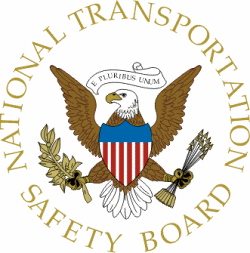
Today in History
20 Years ago today: On 22 October 2005 Bellview Airlines flight 210, a Boeing 737-200, crashed near Lisa Village, Ogun State, Nigeria, following a loss of control, killing all 117 occupants.
| Date: | Saturday 22 October 2005 |
| Time: | 20:40 |
| Type: | Boeing 737-2L9 |
| Owner/operator: | Bellview Airlines |
| Registration: | 5N-BFN |
| MSN: | 22734/818 |
| Year of manufacture: | 1981 |
| Total airframe hrs: | 55772 hours |
| Cycles: | 36266 flights |
| Engine model: | P&W JT8D-17 (HK3) |
| Fatalities: | Fatalities: 117 / Occupants: 117 |
| Other fatalities: | 0 |
| Aircraft damage: | Destroyed, written off |
| Category: | Accident |
| Location: | Lisa Village, Ogun State - Nigeria |
| Phase: | En route |
| Nature: | Passenger - Scheduled |
| Departure airport: | Lagos-Murtala Muhammed International Airport (LOS/DNMM) |
| Destination airport: | Abuja-Nnamdi Azikiwe International Airport (ABV/DNAA) |
| Investigating agency: | AIB Nigeria |
| Confidence Rating: | Accident investigation report completed and information captured |
Narrative:
Bellview Airlines flight 210, a Boeing 737-200, crashed near Lisa Village, Ogun State, Nigeria, following a loss of control, killing all 117 occupants.
Bellview flight 210 was the return flight from Abidjan (ABJ), Ivory Coast to Abuja (ABV), Nigeria with en route stops at Accra (ACC), Ghana and Lagos (LOS), Nigeria.
In preparation for the last leg of the flight, the pilot of Flight 210 contacted Lagos Tower at 20:17 and requested clearance for start-up.
The controller gave him the temperature and QNH, which were 27 degrees Centigrade and 1010 millibars respectively. At 20:24, the pilot requested and got approval for taxi to runway 18L.
The tower controller then issued the route clearance via Airway UR778, Flight Level 250, with a right turn-out on course. The pilot read back the clearance and the controller acknowledged and instructed the pilot to report when ready for takeoff.
At 20:27, the pilot requested "can we have a left turn out please?" and soon afterwards his request was granted by the controller. One minute later the tower cleared flight 210 as follows: "BLV 210 runway heading 3500ft left turn on course" Which was read back by the pilot who also reported ready for takeoff. After reporting the wind condition as 270 degrees at 7 knots the controller cleared Flight 210 for departure at 20:28. The pilot acknowledged the clearance, and at 20:29 requested "And correction, Bellview 210, please we will take a right turn out. We just had a sweep around the weather and right turn out will be okay for us." The controller responded "right turn after departure, right turn on course" and the pilot acknowledged.
At 20:32 the pilot made initial contact with Approach Control and reported "Approach, Bellview 210 is with you on a right turn coming out of 1600 (feet)". The Approach controller replied "report again passing one three zero." The pilot acknowledged at 20:32 and that was the last known transmission from the flight.
The airplane struck the ground on flat terrain in a relatively open and wooded area, 14NM north of the airport.
The next morning the wreckage was found about 30 km (20 miles) north of Lagos.
CAUSAL FACTOR:
The AIB, after an extensive investigation, could not identify conclusive evidence to explain the cause of the accident involving Bellview Flight 210.
The investigation considered several factors that could explain the accident. They include the PIC training of the Captain before taking Command on the B737 aircraft which was inadequate, the cumulative flight hours of the pilot in the days before the accident which was indicative of excessive workload that could lead to fatigue.
Furthermore, the investigation revealed that the airplane had technical defects. The airplane should not have been dispatched for either the accident flight or earlier flights.
The absence of forensic evidence prevented the determination of the captains medical condition at the time of the accident. The missing flight recorders to reconstruct the flight also precluded the determination of his performance during the flight. Due to lack of evidence, the investigation could not determine the effect, if any, of the atmospheric disturbances on the airplane or the flight crews ability to maintain continued flight.
The operator could not maintain the continuing airworthiness of its aircraft, in ensuring compliance of its flight and maintenance personnel with the regulatory requirements. The Civil Aviation Authoritys safety oversight of the operators procedures and operations was inadequate.
